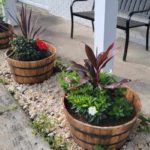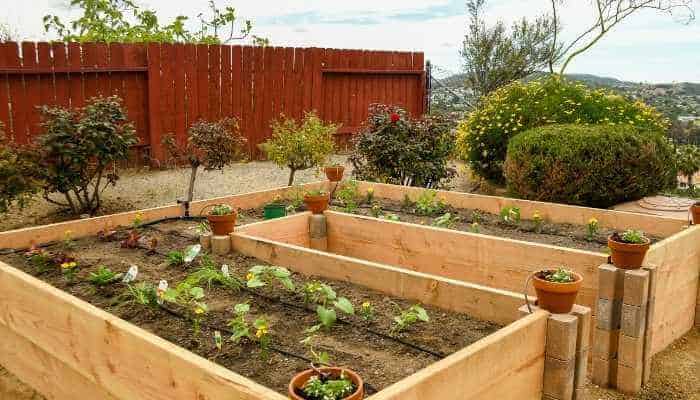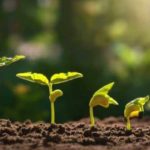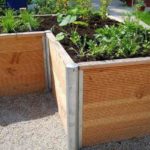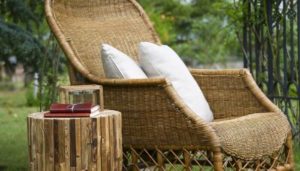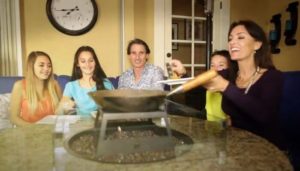Where I live, the wind is a common thing. We are only 40 minutes from the Atlantic Ocean! I have never been the recipient of so much wind. We’ve generally lived in hilly areas or the piedmont areas of the country. So, with higher winds comes more regulations from the local governments, but also – problems with keeping my plants safe from those winds.
Besides choosing the safest location for your raised garden beds, you can protect your plants from strong winds with supports (hoops, fence, or trellis) for tying plants in place and adding feasible barriers to those supports. You can also be sure to keep the roots protected or create a windbreak.
You don’t want your raised garden beds turning over, being damaged by other things caught up in the wind, or being the cause of bad damage elsewhere in your home. So, keep reading for ways of keeping damages from high winds to a minimum.
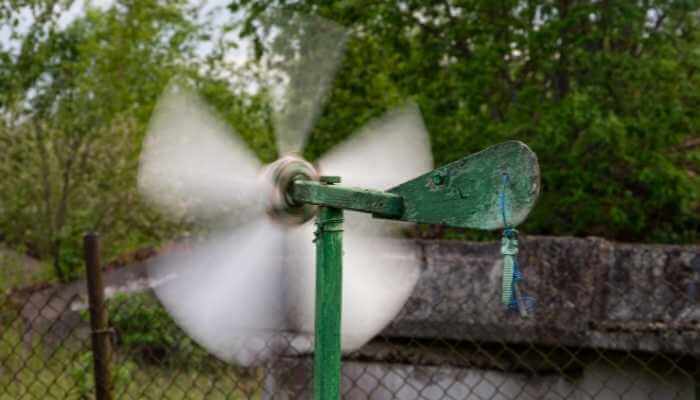
Keep Your Garden Safe from the Very Beginning
Clearing away any old debris or any leftovers from transplanting is a very good idea. When I use soil bought at certain places, it comes in bags. When I purchase plants, they usually come in plastic planters.
When I need to support a plant, I use canes, and so have some lying around here and there. But when you live in a high wind area, you really should put all of this away as soon as possible so that it doesn’t wind up blowing somewhere it shouldn’t be.
There is a very good chance of hurricanes coming through our area (not to mention tornadoes and other gale-force storms). So, if you are in a similar situation, and can’t put something away, you should be securing any items that might get picked up by wind. Netting, covers, and garden cloth should be kept down with weights like stones or properly secured with wire pegging.
Keep Your Plants Prepared for Strong Wind
When it comes to climbing plants, you should make sure the vines or stems are tied to supports every few inches. If you have plants with large foliage or vining and they’ve already finished producing, cut them back. Don’t let them make any kind of sail-like structure that could catch the wind.
And speaking of making sail-like structures that catch the wind, keep this in mind for how you grow your crops. If you can use cones or trellises in a more aerodynamic fashion, do that. If you grow your peas and beans up a ridge-like structure, it’s going to be more likely to catch the wind and either become a hazard or be thoroughly destroyed in the high-force wind.
Staking your plants will keep them from being snapped off or laid over when you have particularly strong winds coming through. This goes for tomatoes especially. Tomatoes should be grown in cones or cages anyway, but adding stakes to the main shaft of the plant will help it tremendously if it gets hit by strong winds.
Another method people use is to place barriers over specific plants. Plant protectors are out there, of chicken wire covered in burlap can be used if you have the time for it. But this may only be a temporary fix, especially when you consider that leaving a plant under a barrier could overheat them.
There are covers that are light materials that can be placed over supports to cover the more tender crops you may have. Shade cloth is an example. It will not only help diffuse wind but also protect your plants from hail.
Keep your garden watered appropriately. Wind evaporates the water from the soil quickly, so keep that in mind. Also, damp soil is less likely to erode.
Be Sure the Location You Choose for Your Raised Beds Is Out of the Way of Overhangs
One thing that can cause damage in high winds that people don’t readily think about is an overhanging branch. I don’t know how many times we’ve had a branch fall and cause significant damage, not just during high winds, but during snowfall as well. This year, I had the option of choosing where to place my raised garden, so it’s not under anything!
However, if you aren’t as lucky, and you already have an established garden or have trees all over the place, be sure to inspect the branches that you can. If you need to remove a tree, there are professionals that can do it (I call them geniuses) with no harm to anything else in your yard. The worst thing is spending a lot of money and putting in a lot of time and effort on a raised bed garden or worse – a greenhouse, only to have the wind loosen a large limb that destroys it.
If you see that you can get away with only removing the branches that overhang, do so and save the rest of the tree. It’s always a very good idea to have your trees inspected for rotten areas, disease, and pests, anyway.
If You Need To, Plan for Strong Winds
I have lived on farms or around them for most of my life. So, I know what a windbreak is. In case you don’t, let me explain:
Windbreaks are linear plantings of trees and shrubs designed to slow the wind before it enters a specific area. They specifically have been used by farms to protect crops, livestock, and structures from harsh or cold winds and to protect soil from wind erosion.
Farmers know the benefits of planting windbreaks. You can look it up on the U.S. Department of Agriculture website and see. Net yields of farmers who have planted windbreaks are on average 10 – 20% higher than those who do not.
If you don’t have a fence and need something to help protect your raised gardens, find some hearty shrubs that you can plant in a line where the strongest wind comes into your garden. When you choose the right plant for the native soil, they will slow down the wind without becoming a hazard themselves.
Block-planting is also a method of keeping your crops stronger against storms and wind. Knowing the directionality of the harshest wind can help you make decisions on how to place your rows and which plants to block-plant and how to space your plants. You want to provide wind with a clean flow-through that doesn’t include grabbing hold of your plants.
Keep a nice layer of heavier material as a cover for your soil to keep the wind from eroding it. Mulch is what I use for the most part. Some growers use burlap instead. These barriers help out in others ways as well, but I just wanted to mention them specifically as protection from the wind.
All You Can Do Is Mitigate the Wind Damage
Wind can cause damage though sending things into your garden that cause destruction, it can turn over or damage the raised beds themselves, it can erode your soil, and it can break your plants, destroying a good crop. But wind happens and for some of us, it happens a lot. So all we can do is use the steps I mention above to keep the damage to a minimum.

